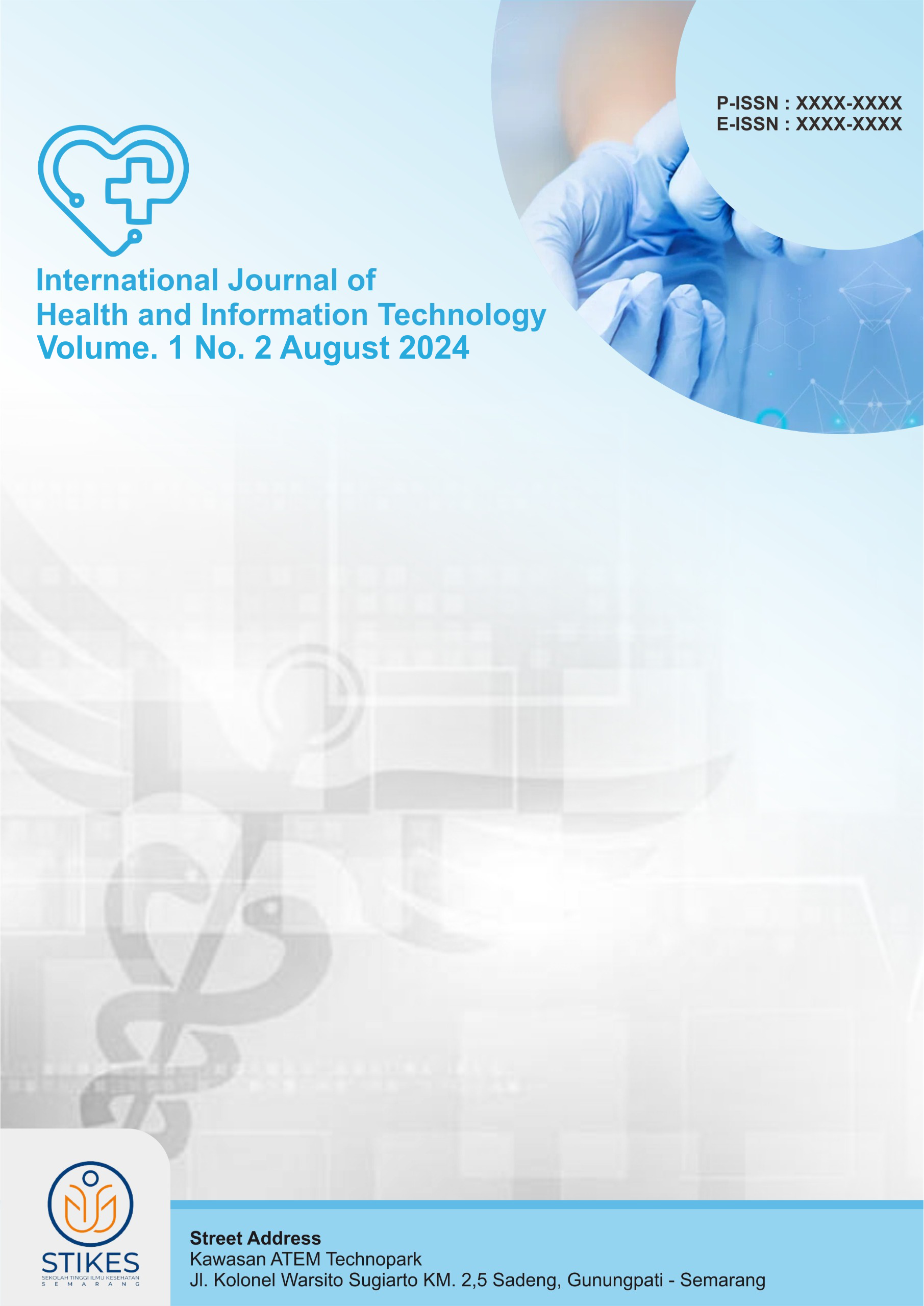IoT-Based Vital Signs Monitor Testing with a Vital Sign Simulator
Keywords:
ESP 32, IoT, NIBP, SPO2, Vital Sign, Vital sign simulatorAbstract
Vital Signs Devices function to detect vital signs from the human body, such as body temperature, blood pressure, heart rate, and blood oxygen levels. These vital signs provide us information whether our body is healthy or not. This vital sign monitoring device used Arduino Node MCU ESP32 as the data processor integrated with a Wi-Fi module, thus, supporting Internet of Things (IoT) application system. It is connected to an Android smartphone and can display measurement data in real-time. There are three sensors used, namely skin temperature sensor, Nellcor Saturation Partial Oxygen (SPO2) sensor and NIBP sensor that can display parameters such as SPO2, NIBP, heart rate, and body temperature in real-time. Vital Sign Simulator was used to test the SPO2, NIBP and heart rate parameters. Body temperature parameter was tested using warmed water medium in a water bath. The results of normal SPO2, NIBP, heart rate, and body temperature measurement showed fairly small differences.
References
Albertengo, G., & Gotti, F. (2020). On the performance of web services, Google Cloud Messaging, and Firebase Cloud Messaging. Digital Communications and Networks. https://doi.org/10.1016/j.dcan.2019.02.002
Berman, A. F. (2016). Kozier & Erb's fundamentals of nursing: Concepts, practice, and process. Pearson.
Car, J. M. (2001). Introduction to Biomedical Equipment Technology. New Jersey: Prentice Hall.
Chan, E. D., & Chan, M. M. (2013). Pulse oximetry: Understanding its basic principles facilitates appreciation of its limitations. Respirato-ry Medicine, 789–799. https://doi.org/10.1016/j.rmed.2013.02.004
Clark-Carter, D. (2005). Encyclopedia of Statistics in Behavioral Science (Vol. 4). New Jersey: John Wiley & Sons, Ltd. https://doi.org/10.1002/0470013192.bsa383
Elagha, A. Y. H., & Al-Farsi, A. A. (2019). Design a non-invasive pulse oximeter device based on PIC microcontroller. International Con-ference on Promising Electronic Technologies (ICPET). https://doi.org/10.1109/ICPET.2019.00027
Fluke Biomedical. (2022). Retrieved from Fluke Biomedical: https://www.flukebiomedical.com/products/biomedical-test-equipment/patient-monitor-simulators/prosim-8-vital-signs-patient-simulator
Geneva, I. I., & Car, B. C. (2019). Normal body temperature: A systematic review. Open Forum Infectious Diseases. https://doi.org/10.1093/ofid/ofz032
Geršak, G., & Nizetic, I. (2009). Concept of personalized biomedical instrumentation: Case study - Blood pressure. IMEKO World Con-gress Fundamental and Applied Metrology.
Harper Smith, A. D., & Rich, D. R. (2010). The validity of wireless iButtons® and thermistors for human skin temperature measurement. IOP Science.
Javaid, M., & Haider, I. (2021). Internet of Things (IoT) enabled healthcare helps to take the challenges of COVID-19 pandemic. Journal of Oral Biology and Craniofacial Research. https://doi.org/10.1016/j.jobcr.2021.01.015
Machado, K., & González-Vega, A. G. (2018). Development of a low-cost pulse oximeter simulator for educational purposes. 2018 IEEE ANDESCON. https://doi.org/10.1109/ANDESCON.2018.8564698
Padmini, S., & Dinesh, M. (2019). Development of pulse oximeter for heart rate monitoring. AIP Conference Proceedings. AIP Publish-ing. https://doi.org/10.1063/1.5114589
Panicker, N. V., & Krishnan, S. K. (2015). Real-time monitoring of vital signals through telemedicine for community healthcare. Interna-tional Conference on Control, Communication & Computing India (ICCC). https://doi.org/10.1109/ICCC.2015.7432921
Pearce, E. C. (2018). Anatomi dan Fisiologi untuk Paramedis. Jakarta: PT. Gramedia Pustaka Utama.
Pickering, T. G., Harshfield, G. A., & Kleinert, H. D. (1982). Blood pressure during normal daily activities, sleep, and exercise: Compari-son of values in normal and hypertensive subjects. JAMA. https://doi.org/10.1001/jama.1982.03320320028025
Verma, N., & Soni, S. (2018). Development of native mobile application using Android Studio for cabs and some glimpse of cross-platform apps. International Journal of Applied Engineering Research.
Vijay, V., & Batra, A. (2014). Development of calibration procedure and calculation of uncertainty for critical care medical parameters. IEEE Xplore. https://doi.org/10.1109/ICGCCEE.2014.6922407
Webster, J. G., & Neuman, B. C. (2020). Medical Instrumentation: Application and Design (5th ed.). New Jersey: John Wiley & Sons Inc.
Zhu, Q., & Wang, R. (2010). IoT Gateway: Bridging wireless sensor networks into the Internet of Things. IEEE/IFIP International Conference on Embedded and Ubiquitous Computing. https://doi.org/10.1109/EUC.2010.58










